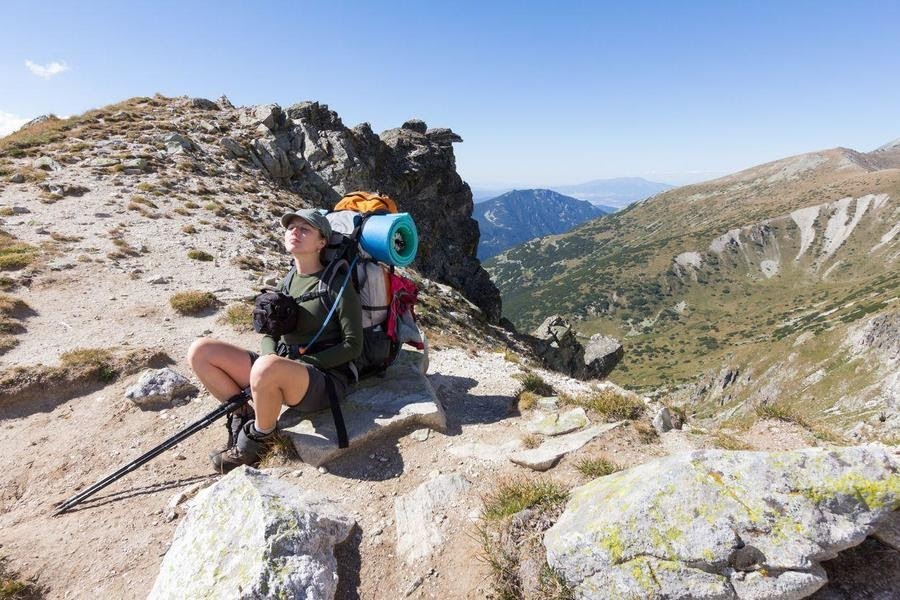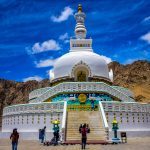Acute Mountain Sickness In Ladakh and How To Deal With It!
The ‘land of high passes’ Leh Ladakh, in the modern day, is one of the most sought-after destinations that finds itself a place in every traveller’s bucket list.
Home to rugged roads with hairpin bends, breathtaking views, and unparalleled adventure, Leh Ladakh surely is an adventurer’s paradise, which is why Leh Ladakh tour packages are quite in demand among travellers who are looking for a thrilling adventure like no other.
The paradisical land, besides being an adventure land, is also an abode to matchless experiences like gazing at the absolutely breathtaking milky way galaxy at the Nubra Valley, watching the serene Pangong lake, one of the most beautiful lakes in Ladakh change its colour, and last but definitely not least, the photo-op at Rancho School, the school which has been featured in the Bollywood blockbuster; 3 Idiots. Adventure, thrill, beauty and more, Leh Ladakh has it all.
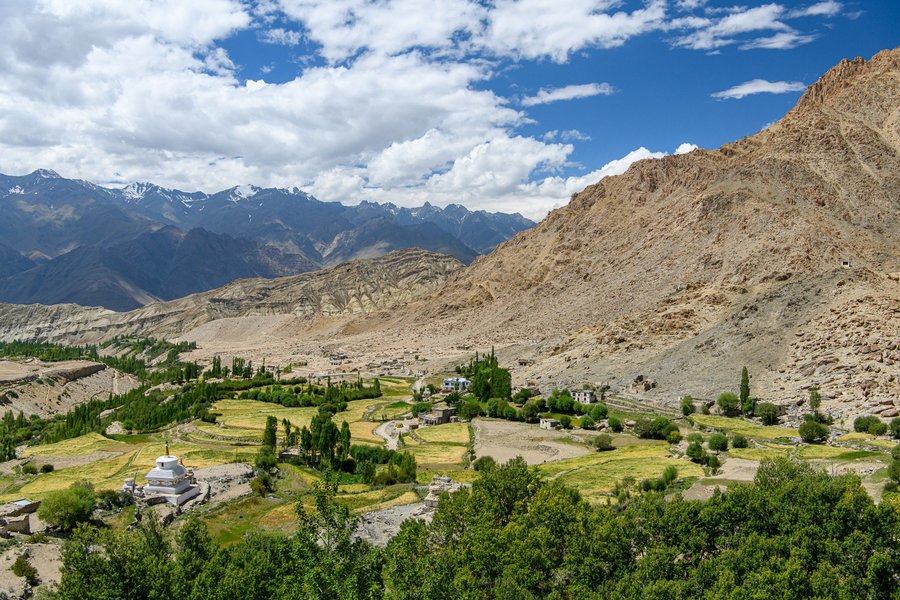
The land of high passes is the epitome of beauty and all things wonderful, but sometimes, a heaven-like spot such as Leh Ladakh may also cause a bit of distress to your body. After all, no one is accustomed to living in the heavens; hence, being in Ladakh could make you feel uncomfortable. Put simply, travelling in higher altitudes causes breathlessness and headache along with nausea as our body is not accustomed to living in higher altitudes (heavens). This condition in higher altitudes is known as altitude sickness. The condition is common, and many people have experienced acute mountain sickness in Ladakh.
Getting hit by acute mountain sickness in Ladakh is possibly the last thing one would want. Nothing is fun when you suffer from such a sickness. So, if no fun is to be compromised, it is better to be well prepared and be aware with regard to acute mountain sickness while travelling in Ladakh. Though Acute Mountain Sickness is a serious thing, with proper measures and knowledge, you can beat it and enjoy the land, which is also home to some of the best road trips in India. With this being said we’re here to give you everything you need about Acute Mountain Sickness.
Here, you will be provided with enough information about the condition and how to deal with it at a higher altitude. You will also be enlightened about the treatment of the same.
What Exactly Is Acute Mountain Sickness ?
Sudden exposure to higher altitudes with a low-pressure and a lesser amount of oxygen in the air causes hypoxia; it is a condition wherein organs of the body are deprived of the adequate amount of oxygen needed to carry out the vital functions in the body. Similarly, when we travel to Ladakh, we get exposed to a low amount of oxygen and experience acute mountain sickness. Usually, the condition has been reported by people while travelling above 8000 ft. However, people not used to higher altitudes are likely to experience this sickness even at lower heights.
Suggested Read: Monasteries of Ladakh
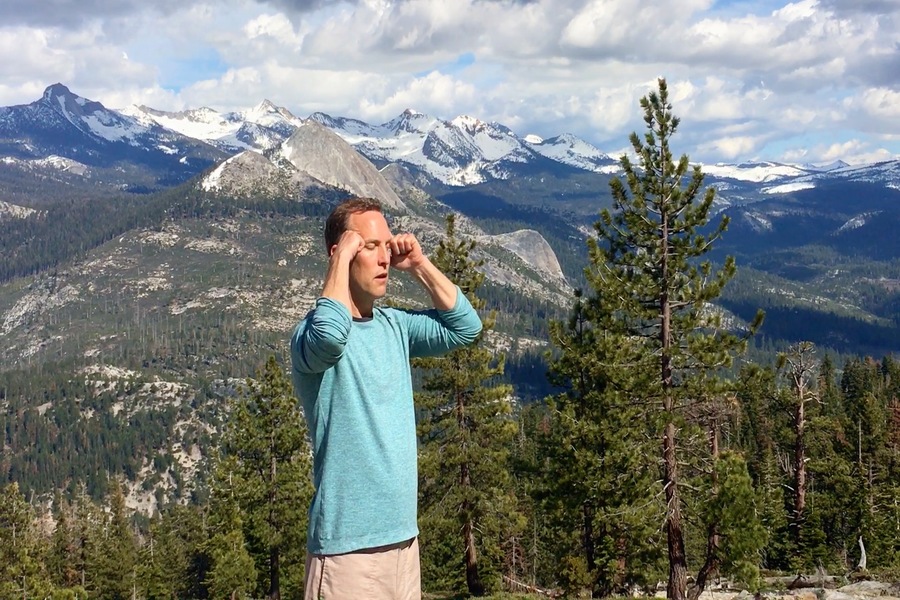
Acute mountain sickness, abbreviated as AMS is one of the subsets of altitude sickness; the other is chronic mountain sickness. Severe acute mountain sickness can become life-threatening by progressing to pulmonary edema, in which water accumulates in the lungs.
The Different Forms Of Acute Mountain Sickness
Acute Mountain Sickness is not that rare in Leh Ladakh and can happen to anyone, but this is not just it; AMS also comes in different forms, and it becomes absolutely essential to know about them and the measures required to avoid or treat it.
- Mild AMS- As the name implies, mild AMS or mild Acute Mountain Sickness means that a person travelling in a high altitude destination like Leh Ladakh might experience mild symptoms like low-degree headaches or fatigue. These symptoms don’t necessarily interfere with daily activities, and symptoms usually wear off once the person acclimates to the new environment.
- Moderate AMS- A bit severe as compared to Mild AMS, a person travelling in a high altitude region like Leh Ladakh may experience symptoms like severe headaches, and nausea and might experience breathlessness too. These symptoms usually act as a hurdle in daily activities, and the person usually is suggested to move to a lower altitude.
- Severe AMS- As the name suggests, severe AMS is when a traveller in Leh Ladakh or any other high-altitude region experiences severe or life-threatening symptoms like shortness of breath, rapid heartbeat or palpitations, which can be fatal too at times. In situations like these, the person must move to a lower altitude and seek emergency medical care.
- HAPE (High Altitude Pulmonary Edema)- HAPE or High Altitude Pulmonary Edema is rare but can be life-threatening if a person is diagnosed with it. When at Leh Ladakh or other high altitude conditions, HAPE leads to the production of excess fluid in the lungs, which makes it difficult to breathe and eventually leads to shortness of breath which can lead to excess fatigue and suffocating feeling.
- HACE (High Altitude Cerebral Edema)- Another rare but life-threatening High Altitude condition is HACE, or High Altitude Cerebral Edema produces excess fluid in the brain, which can cause swelling in the brain. Brain swelling leads to neurological symptoms like confusion, and hindrances in motor skills; in rare cases, the condition also leads to violent behaviour.
Well, before you scroll down, you must also checkout the popular spots for trekking in Ladakh to have an adventure that you will never forget.

Who All Are At Risk of getting Acute Mountain Sickness?
When it comes to Acute Mountain Sickness, anyone travelling to a high-altitude region like Leh Ladakh can have it. While anyone can get it, there are still some people at a higher risk of getting it; some of them are:
Patients with Lung and Heart conditions: As discussed above, high-altitude regions like Leh Ladakh have less oxygen which directly affects your breathing and heart rate. Therefore those with lung and heart diseases will have a hard time breathing, which directly puts pressure on the heart.
People who live at a low altitude: People who usually live at low altitudes usually find it difficult to acclimate to the higher altitudes since their bodies are adapted to the lower altitudes. Therefore those travelling to higher altitude regions like Leh Ladakh are highly suggested to acclimate to the new surroundings before engaging in any activities there. In Leh Ladakh, a minimum of two days acclimatisation period is recommended.
Women who are pregnant: Women who are expecting should avoid travelling to high-altitude regions like Leh Ladakh since exposure to high altitude can lead to a myriad of complications and neonatal morbidity.
What are the Symptoms of Acute Mountain Sickness?
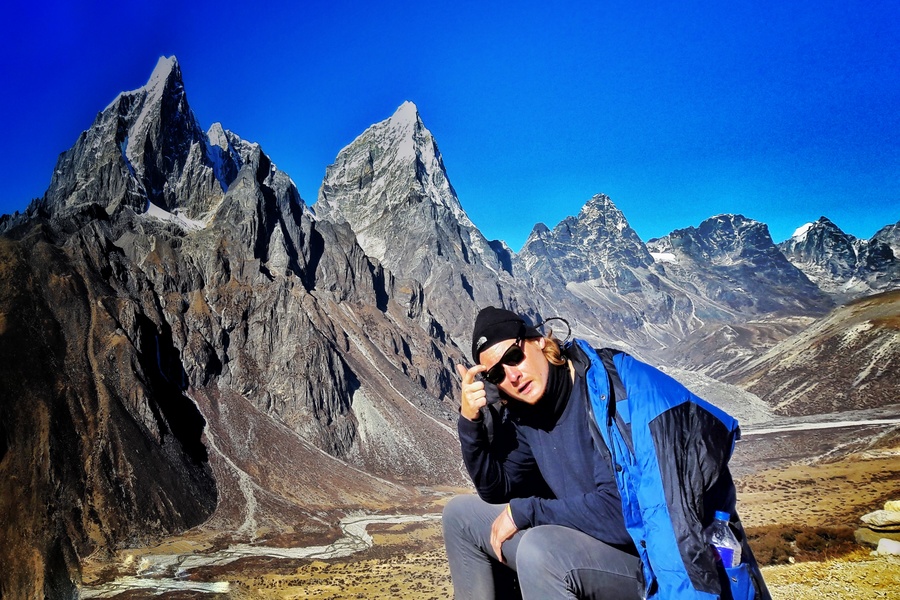
The condition usually begins with a state of confusion and tiredness. However, early symptoms of AMS may vary from person to person. We have listed down all possible symptoms of the sickness that will help you prepare well before your trip to Ladakh:
- Dizziness
- Headache
- Muscle ache
- Nausea
- Sleeplessness
- Tiredness
- Vomiting
- Breathlessness
- Wheezing while breathing
- High heartbeat and breathing rate.
- Bluish discolouration of the skin
- Congestion
- Trouble in walking
- State of irritation and confusion
- Chest tightening
Now that we know what acute mountain sickness in Leh Ladakh would feel like, we can proceed further to know about its prevention and cure.
How Should You Deal With Acute Mountain Sickness?
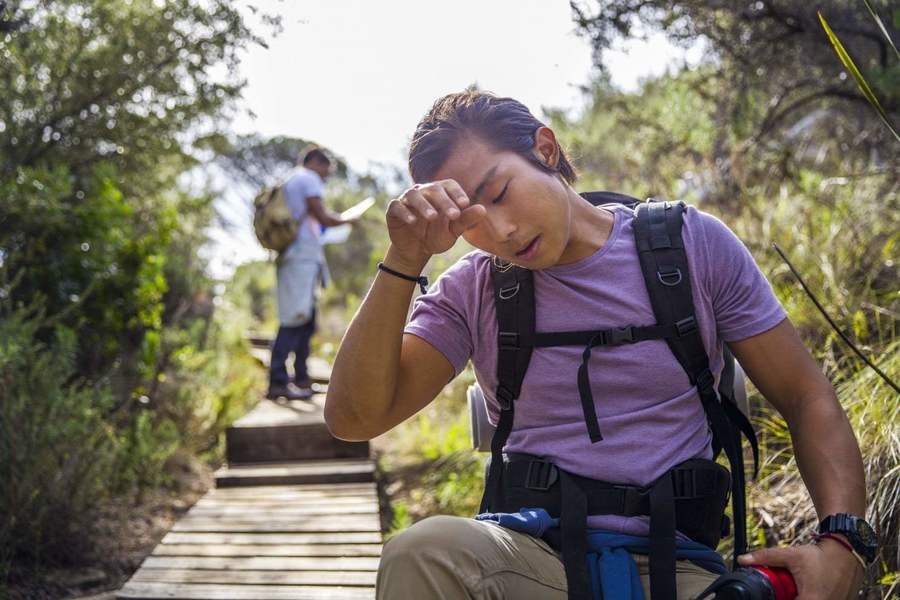
This section is divided into two parts, prevention and treatment.
Prevention
It is rightly said that ‘prevention is better than cure’ and this goes while dealing with acute mountain sickness too. As nobody would want to waste their time on treating the sickness while they are in Ladakh, preventing it from hitting is the first thing to do.
Avoiding activities which increase the chances of acute mountain sickness and Involvement in activities that reduce its chances are two ways to prevent it. Here is a list of things to avoid acute mountain sickness in Ladakh;
- Avoid intense physical activities in the first two days in Ladakh
- Avoid the use of alcohol and drugs and sleeping pills; these will alter the respiratory process and initiate acute mountain sickness.
- Return to a lower altitude if needed.
- Adjust to a low oxygen level by climbing at a slower rate.
- Do not intake antioxidants as they are ineffective against AMS.
- Carry supplemental oxygen in bottles or small containers
- Take a dose of Diamox for the first two days. It contains salt called acetazolamide that makes the blood acidic, which in turn increases oxygen in the blood.
- Consider training in altitude tents which have stimulated conditions of higher altitudes.
- Carry Ibuprofen and Imitrex tablets. These are used to treat pain, migraine and other headaches.
- Drink ample amounts of water and stay hydrated.
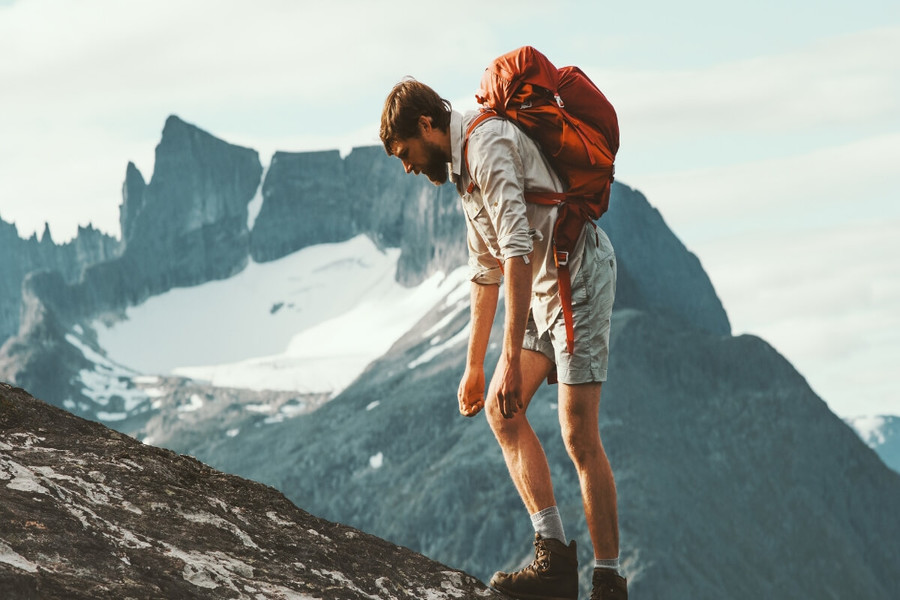
Treatment
Treatment of acute mountain sickness starts with descending. Once you feel AMS hits you, you may descend as soon as possible. It will not allow the condition to become severe and will even make you feel better. Further, there are other tested treatments for AMS as well. You can know about them here:
- Gamow Bag: It is a sealed bag used to lower effective altitude. This bag is portable and is called a hyperbaric bag. It is used to treat severe cases of AMS.
- Acetazolamide: This medicine increases the flow of oxygen in the blood and pacifies the symptoms.
- Artificial Oxygen Enrichment: Supplying oxygen to the body using cylinders improves the conditions by oxygenation and reduces the symptoms.
- Other Pills: Nifedipine, Sumatriptan, Paracetamol and Ibuprofen are other such drugs that can help in relieving the condition of AMS. These drugs are only to be taken after seeing a doctor.
Suggested Read: How To Plan An Ultimate Trip To Leh Ladakh- All FAQs answered!
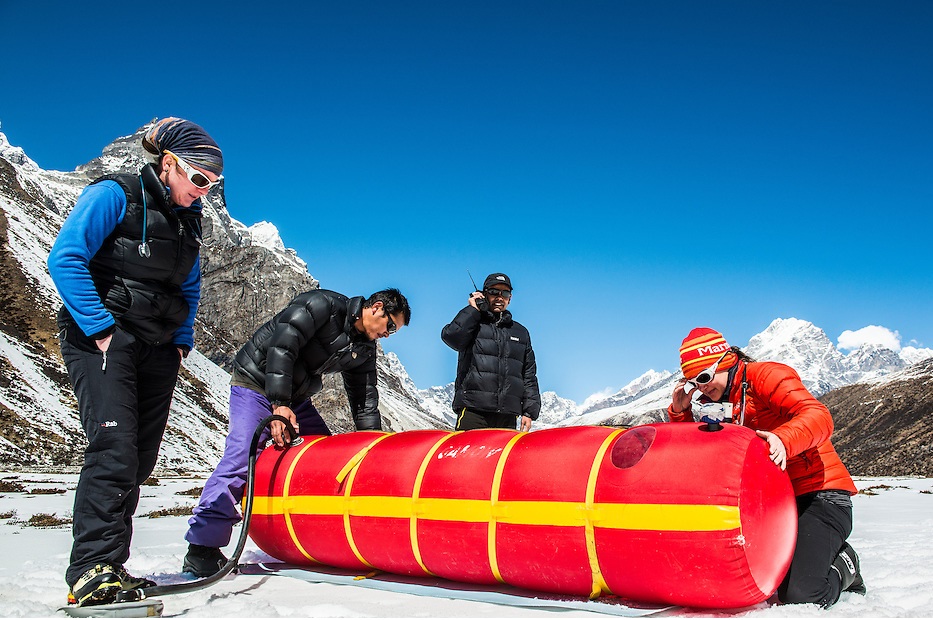
To truly enjoy your visit to Ladakh, you must be both aware and prepared for acute mountain sickness. A little carelessness can totally spoil the party for you, and you will remember visiting Ladakh for all the wrong reasons. Therefore, take precautions and enjoy your trip.
Answering Other Questions About Acute Mountains Sickness
Can children get Acute Mountain Sickness in Leh Ladakh?
Yes, just like adults, children too can get Acute Mountain Sickness in high-altitude regions like Leh Ladakh. Well, not just AMS; children can also get pulmonary edema and cerebral edema as much as adults.
What causes Acute Mountain Sickness?
High-altitude regions have less oxygen, and it is the lack of oxygen that causes Acute Mountain Sickness. It is believed by a number of scientists that the increase in blood flow leads to swelling in the brain, which leads to AMS. However, scientific research has yet to be able to answer this question.
Can Acute Mountain Sickness become fatal?
Acute Mountain Sickness can lead to High Altitude Pulmonary Edema and High Altitude Cerebral Edema, which can be fatal. Therefore it becomes necessary to follow all the essential measures to prevent AMS.
Disclaimer: If you have any issues with the content of this blog, you can contact us at info@wanderon.in


